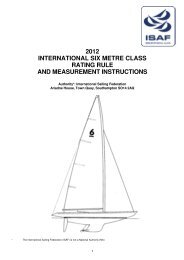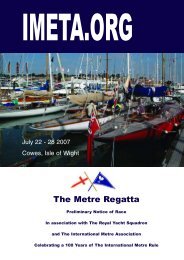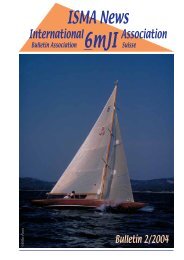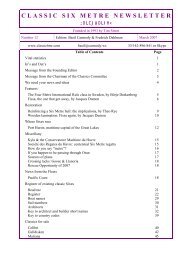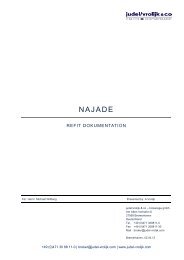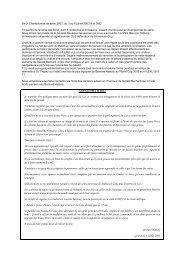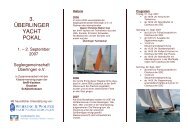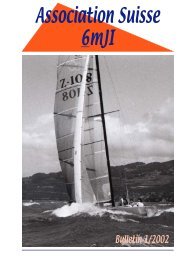ISMA News - Association Suisse 6mJI
ISMA News - Association Suisse 6mJI
ISMA News - Association Suisse 6mJI
Create successful ePaper yourself
Turn your PDF publications into a flip-book with our unique Google optimized e-Paper software.
54<br />
<strong>6mJI</strong> Historic Place<br />
<strong>ISMA</strong> <strong>News</strong> International <strong>6mJI</strong> <strong>Association</strong><br />
Tim was so kind to make an actualisation of his newsletter no 9. We are very happy to print it here. Even some very<br />
interesting photo came with the report. Enjoy these news:<br />
Classic Notes 9a<br />
March 2004<br />
It has been a surprisingly good winter for movement of Classic Sixes. Classic <strong>News</strong>letter No. 9, dated 25 th November<br />
2003, was finally published on 1st February 2004, as it was held for the latest stop press news from Norway and France.<br />
However, since then, further research has taken place and progress made on a number of sixes.<br />
In the last <strong>News</strong>letter, a draft of possible Classic Rules was included, to enable comment to me made.<br />
The major point, which has come up, is the doubt expressed over rescuing old boats, by fastening a single layer skin of<br />
3mm cold moulded timber over the existing planking, to hold the hull together and to strengthen it for modern rig strains.<br />
It should be emphasised that, at present at least, it is perfectly legal to restore boats using this method, under current<br />
International Metre-Class Rules and has been passed by the <strong>ISMA</strong> Technical Committee.<br />
This observation has come from Finland, where many classic Sixes have been restored by undertaking total rebuilds and<br />
much re-planking, certainly underwater. It is also known that a number of Sixes within Europe at least, have had to be<br />
rebuilt by taking the whole of their underwater hull off and rebuilding to the original plans, due to either the wooden keel<br />
having broken under the mast step, or the wooden keel being completely rotten. The draft Rules have therefore been<br />
framed especially to be inclusive, at least at this stage. What the draft Rules do not condone is re-planking with plywood,<br />
which, in one case at least, it is believed has been done.<br />
The following exciting news of Classic Six-Metres it is hoped will be of interest to all owners.<br />
E 31 Asti V. (Now ex K 61 Saxon; a 1930 Morgan Giles). It was reported in <strong>News</strong>letter No. 9 that she had been bought<br />
by Ian Lindsey, who planned to put her back to full racing trim over this winter. Since then she has been bought by a<br />
Spanish group, who have taken her back to Bilbao, where she was originally built by Segredo Hnos. The intention is to<br />
return her to full racing trim, under the Spanish ensign, when it is believed and hoped that she will become the first<br />
Spanish registered Six-Metre to race internationally, since 1934. Unfortunately, her designs and drawings have not been<br />
found in England and it is believed that none were kept after the closure of the Morgan Giles firm.<br />
L 2 Mosquito (ex Colibri). The Mosquito saga started when a photograph was received, from Petter Halvorsen in<br />
Norway, asking for the identity of the boat in it. After much research and discussion, together with considerable help<br />
from the Norwegian Maritime<br />
Museum, she was<br />
finally identified as the<br />
1913 Johan Anker Six-<br />
Metre, Mosquito,<br />
perhaps the narrowest<br />
Six-Metre built and the<br />
first Bermudan rigged<br />
Six in Norway. Petter<br />
has already begun work<br />
on her restoration and<br />
plans to re-rig her with<br />
her original Bermudan<br />
rig. He has already<br />
selected and cut the<br />
trees for her mast and<br />
boom.



